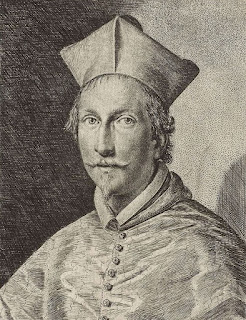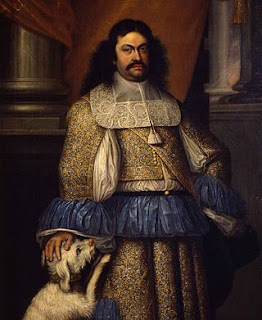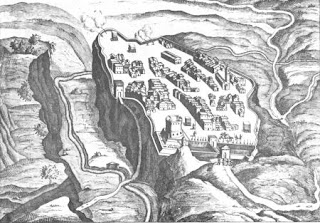Brilliant tactician who outwitted his opponents
 |
| Raimondo Montecuccoli, depicted in this 1650 engraving, was a renowned military strategist |
As well as being Count of Montecuccoli, Raimondo also became a Prince of the Holy Roman Empire and the Duke of Melfi in the Kingdom of Naples.
He was born in the Castello di Montecuccolo and at the age of 16 began serving as a soldier under the command of his uncle, Count Ernest Montecuccoli, who was a general in the Austrian army.
After four years of active service in Germany and the Low Countries, Raimondo became a captain of infantry.
He was wounded at the storming of New Brandenburg and at the first Battle of Breitenfeld, where he was captured by Swedish soldiers. After being wounded again at Lutzen in 1632 he was made a major in his uncle’s regiment. He then became a lieutenant–colonel of cavalry.
At the storming of Kaiserslautern in 1635 he led a brilliant charge and was rewarded by being made a colonel.
In 1639 he was taken prisoner by the Swedes during the Battle of Chemnitz and held for two and a half years, but he used the time during his captivity to study military science, geometry, history and architecture.
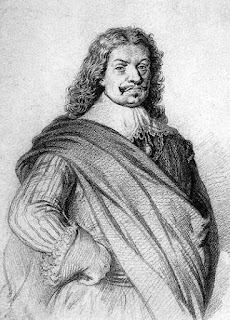 |
| Montecuccoli returned to Italy in 1642 to fight for Modena in the First War of Castro |
He served in Hungary, Austria and Bohemia, winning himself the rank of General of Cavalry and his rearguard action at the battle of Zusmarshausen rescued the imperial forces from a disastrous defeat.
In 1657 Raimondo married Countess Margarethe de Dietrichstein. Soon afterwards he was ordered by the Emperor to take part in an expedition against the Swedes and the Cossacks. During this conflict he was promoted to commanding officer of the division.
Between 1661 and 1664 he defended Austria against the Turks and although he had inferior numbers he defeated them so comprehensively they agreed to a 20-year truce. He was hailed as the saviour of Christendom.
As president of the Hofkriegsrat - the supreme imperial war council - in 1668, Raimondo introduced a lighter musket and reduced the numbers of infantry pikemen while increasing the amount of soldiers armed with firearms.
When the Franco-Dutch war broke out he took command of the imperial forces against the armies of Louis XIV and in 1673 he completely outmanoeuvred his rival, the French commander Turenne, before capturing Bonn and joining his army with that of William III, the prince of Orange in what was to have been his last campaign before retiring.
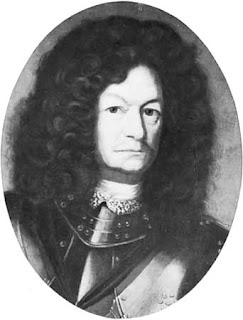 |
| Montecuccoli retired from the battlefield in 1676 and died four years later at the age of 71 |
He spent his retirement working in military administration in Vienna. In 1679 he was made a Prince of the Holy Roman Empire and he was awarded the Dukedom of Melfi by the King of Spain. Raimondo died in an accident in 1680, at the age of 71.
Raimondo Montecuccoli was considered to be a brilliant military theorist and his, Memorie della guerra, published in 1703, profoundly influenced warfare afterwards. His most important work, Dell’arte militare has been reprinted many times.
In 1934 the Italian navy launched the Raimondo Montecuccoli, a light cruiser named in his honour, which served throughout World War II.
 |
| The Castello di Montecuccolo, where Montecuccoli was born more than 400 years ago, can be found at Pavullo nel Frignano |
The Castello di Montecuccolo where Raimondo Montecuccoli was born, still stands in Pavullo nel Frignano, 42km (26 miles) south of Modena. It was built in the 11th century as a watchtower to protect the area and in the 12th century a fortified house was added to it. New buildings were added over the centuries and in the 15th century the Church of San Lorenzo was built at a lower level than the castle.
 |
| The facade of Modena's Duomo, in the city's central Piazza Grande |
The Duchy of Modena and Reggio was an Italian state from 1452 to 1858. The Ducal Palace in Modena, which was built in the 17th century but not completed until the reign of Francis V in the 19th century, now houses a military museum and library. Modena has become famous for the production of sports cars, including Ferrari and Lamborghini, for its balsamic vinegar and as the birthplace of opera singers Luciano Pavarotti and Mirella Freni.
More reading:
Footballer Luca Toni - Pavullo nel Frignano's other favourite son
The Modena news vendor who founded the Panini football stickers empire
How Luciano Pavarotti became one of opera history's greatest tenors
Also on this day:
1513: The death of the pope who commissioned Michelangelo for the Sistine Chapel
1817: The birth of chocolatier Domenico Ghirardelli
1868: The death of painter and revolutionary Giuseppe Abbati
Home
